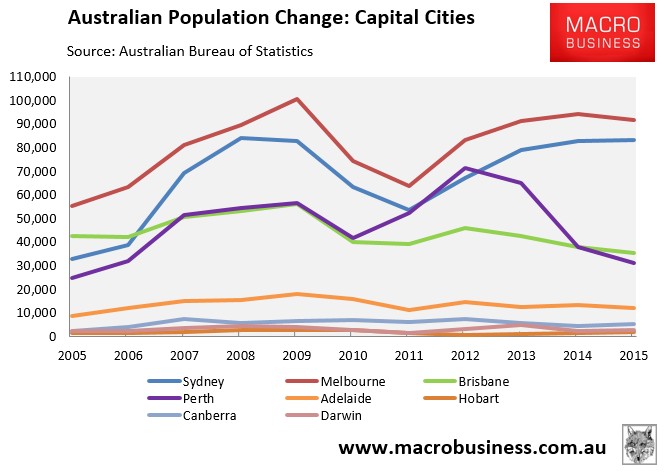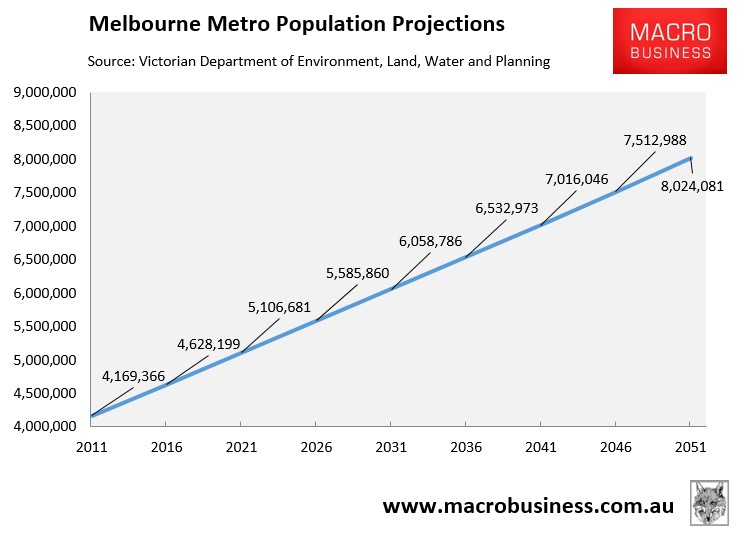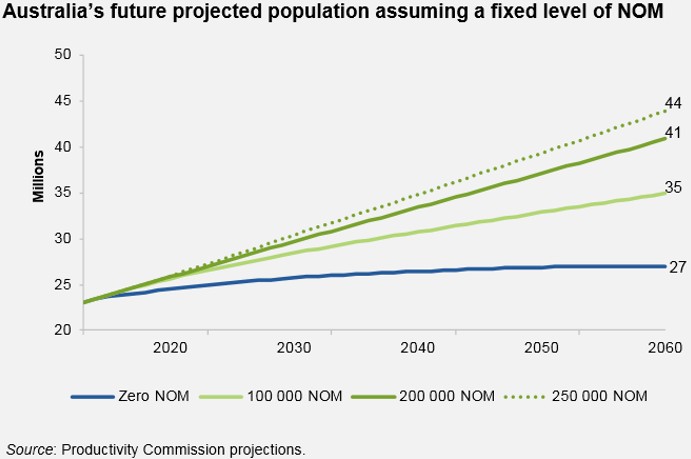I’ll ask the question yet again: What do you get when you shove an MCG-worth of people into a city each year, without sufficient new infrastructure investment?
Answer: Infrastructure bottlenecks, rising congestion, smaller and more expensive homes, and lower overall living standards.
Yet this is exactly what Melbourne has done as it has embarked on the mother of all population ponzis. In the decade to June 2015, Melbourne added an incredible 832,000 people – the largest population increase out of Australia’s capital cities (see next chart).

The result has been incessant “crush loading” with the city’s roads now choked with traffic much of the time, trains frequently jammed beyond capacity, and housing woefully expensive.
Yesterday, The Age featured an article on Melbourne’s suburb of Caroline Springs in Melbourne’s west, which after 17 years of waiting is finally set to get its very own railway station. There’s only one problem: the trains operating along the line are already full:
Caroline Springs, we have a problem.
Those trains that will be stopping at your new railway station when it opens in January, they’re already full.
As in, 100 per cent full in the morning, when many of you will be hoping to ride one into the city to get to work, instead of battling in on the Western Freeway…
If you want a seat on a train you may have to wait until 9.10am, and be prepared to get to work well after 9.30am.
…it does illustrate yet again how far Melbourne’s population growth has been allowed to run ahead of infrastructure.
Little more than paddocks at the turn of the millenium, Caroline Springs, 25 kilometres west of Melbourne, is now home to about 24,000 people. It is part of the City of Melton, one of Australia’s fastest growing municipalities.
The above is yet another example of Australia’s dysfunctional population ponzi in action, which is crushing Melbournian’s living standards.
While the situation is already bad, it will get much worse over coming decades given Melbourne’s population is projected to balloon by 3.4 million people over the next 35 years on the back of high immigration, representing growth of just over 1,850 people every week or 97,000 people a year! That’s the equivalent of 9 Canberra’s or 2.5 Adelaide’s to be added to Melbourne’s population by 2051, according to the official forecasts (see next chart).

As the Productivity Commission illustrated in its recent Migrant Intake Australia report, immigration policy is a defacto population policy. If our policy makers choose to persist with a high immigration program then Australia’s population will hit 40 million or more by 2060, with most of this added population flowing to Melbourne and Sydney. However, if we cut immigration back significantly, Australia’s population will be much smaller, as it will be in our major cities (see next chart).

Indeed, the Productivity Commission estimated a 13 million difference in Australia’s population size in 2060 between persisting with historical rates of immigration (40 million) and zero net overseas migration (27 million).
Given the strains across our big cities, Blind Freddy can see that the optimal thing to do is to reduce Australia’s net overseas migration to much lower levels than the circa 200,000 currently. This would unquestionably relieve pressures on congestion, housing, and overall living standards, while forestalling the need for costly retrofitting of infrastructure to accommodate more people.
It is a policy choice how big and crowded Australia’s cities become. Our policy makers must cut immigration significantly and aim for a smaller, more sustainable and more liveable Australia. Our future living standards depend on it.

